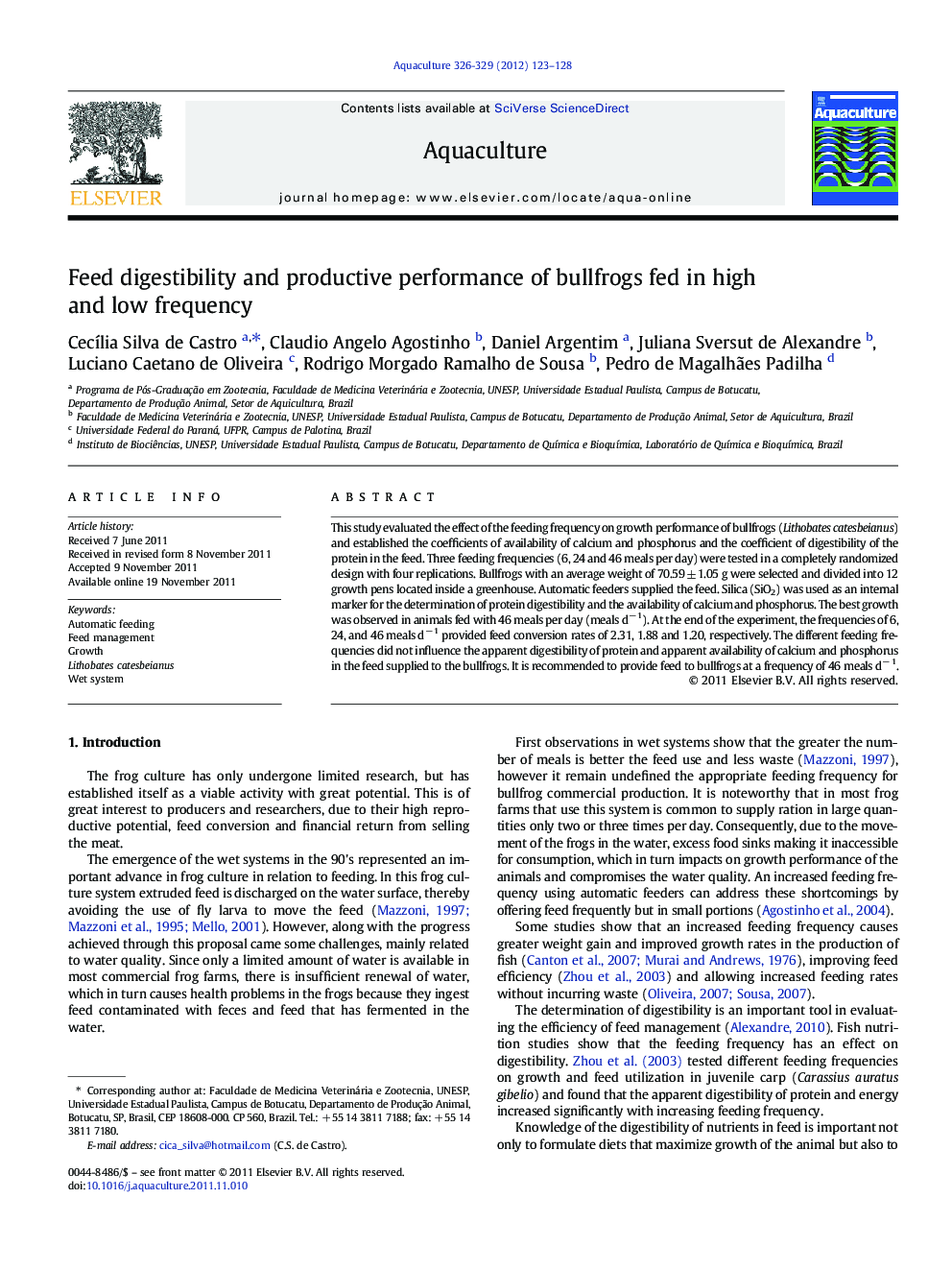| Article ID | Journal | Published Year | Pages | File Type |
|---|---|---|---|---|
| 2422739 | Aquaculture | 2012 | 6 Pages |
This study evaluated the effect of the feeding frequency on growth performance of bullfrogs (Lithobates catesbeianus) and established the coefficients of availability of calcium and phosphorus and the coefficient of digestibility of the protein in the feed. Three feeding frequencies (6, 24 and 46 meals per day) were tested in a completely randomized design with four replications. Bullfrogs with an average weight of 70.59 ± 1.05 g were selected and divided into 12 growth pens located inside a greenhouse. Automatic feeders supplied the feed. Silica (SiO2) was used as an internal marker for the determination of protein digestibility and the availability of calcium and phosphorus. The best growth was observed in animals fed with 46 meals per day (meals d− 1). At the end of the experiment, the frequencies of 6, 24, and 46 meals d− 1 provided feed conversion rates of 2.31, 1.88 and 1.20, respectively. The different feeding frequencies did not influence the apparent digestibility of protein and apparent availability of calcium and phosphorus in the feed supplied to the bullfrogs. It is recommended to provide feed to bullfrogs at a frequency of 46 meals d− 1.
► The food supply is a challenge for aquatic organisms' producers. ► Techniques to improve food management are essential to aquaculture development. ► It was evaluated the effect of feeding frequency on bullfrog productive performance. ► The largest number of meals improves growth and feed conversion rate. ► The ration digestibility is not affected by the feeding frequency.
